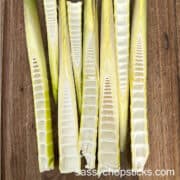In recent years, there has been a growing interest in alternative sweeteners offering a healthier option without compromising taste. Maltose syrup has emerged as an excellent alternative, valued for its unique properties, natural origins, and numerous benefits in the food and beverage industry. Many people and food companies are switching to maltose since this golden-colored syrup contains no fructose.

Jump To
In this post, we will delve into the fascinating world of maltose syrup, exploring its uses, health effects, and why it has become a favorite among people worldwide. Read on!
What is maltose syrup?
麦芽糖 (pinyin: mài yá táng) is the Chinese term for maltose syrup, which is a type of sugar that is made from malted grains, usually barley. Maltose is a disaccharide comprising two simple sugar molecules, precisely two glucose molecules joined together.
Maltose syrup has a sweet taste and high viscosity, making it sound like a sweetener and a thickening agent in cooking. It is often used in Chinese cuisine to make sweet dishes such as maltose-coated pork and maltose syrup for sweetening desserts.

In addition to cooking, maltose is also used in the production of beer and other alcoholic beverages and the manufacturing of candy and other confections.
Pure maltose is a natural sweetener made by distilling fermented grains, typically rice. In terms of the unique taste, it is a little bit less sweet than regular sugar. Its appearance is similar to honey. However, maltose has a thick consistency and is stiffer and less free-flowing. Pure maltose syrup also has lower sweetness than normal table sugar. Rice and water are the main ingredients of maltose syrup. Scientifically, this sweetener is two glucose molecules combined and contains no fructose.
Many foods naturally contain maltose. It is found in wheat, barley, cornmeal, and certain ancient grains. Fruits are another great source of maltose, e.g., pears and peaches. Sweet potatoes also contain maltose.
How to use maltose syrup?
Maltose is widely used in cooking as a flavor enhancer due to its sweet flavor. The Chinese use it in virtually everything, especially in Chinese cooking. This natural sweetness is used in place of simple sugars as a nutrient for yeast when making bread. Char siu is a popular Chinese BBQ dish with maltose to coat and sweeten the meat. Beijing roast duck is another famous Chinese dish that uses maltose to make the exterior crisp and infuse subtle sweetness. This natural sweetener is also widely used in sticky rice, ice cream, and mooncakes. It can also make confections such as toffee, caramel, beer, and other alcohol content beverages.
In the old times in China, vendors in the street used maltose syrup to create many shapes of lollipops for kids. If you take a closer look at them, they look like caramel hard candy. Those hard candies are part of my childhood memory, and I can still clearly remember them.
How to make maltose syrup
One common way to use maltose is to make maltose syrup, which is a thick, sticky syrup that can be used as a sweetener or a glaze. To make high maltose syrup, mix maltose powder with water in a saucepan and heat it over low heat. Stirring constantly, until the powder dissolves and the mixture thickens. Because of the high viscosity of maltose, many recipes usually require stove heating or microwaving this ingredient to dissolve it. The syrup can then be used in recipes or stored in an airtight container for later use.
You can use maltose syrup to prepare Chinese-style BBQ dishes, such as char siu or any meat. The meat is marinated in a mixture of maltose, soy sauce, hoisin sauce, and other seasonings, which gives it a sweet and savory flavor and a shiny, caramelized glaze when cooked.
Good functional substitute for maltose
Even though maltose syrup is a trendy sweetening ingredient, it takes work to find. The good news is there are many substitute options available, such as:

- Honey
- Barley malt syrup
- Brown rice syrup
- Corn syrup
- Maple syrup
- Golden syrup
- Cane syrup
- Sorghum syrup
- Agave nectar/syrup
You can use these alternatives in basically any recipe that requires maltose.
Health effects of maltose
Maltose syrup, like any sugar or sweet syrup, can have positive and negative health effects depending on consumption and individual circumstances. Maltose syrup can still raise blood glucose levels. However, compared to other kinds of sugar, such as sucrose or high fructose corn syrup, maltose has a relatively low glycemic index (GI).
Regarding caloric content: Maltose syrup is a concentrated source of calories; the number of calories is similar to other sweeteners. While maltose is generally considered safe for consumption in moderate amounts, excessive consumption of any sugar can lead to health problems such as weight gain, heart disease, and diabetes.
As with any food or ingredient, it is essential to consume maltose in moderation as part of a balanced diet that includes a variety of nutrient-dense foods.
Where to buy maltose and storage
This inexpensive sweetener is typically only available in Asian grocery stores in the United States and online.
For storage and shelf life, keeping maltose dry in a sealed container and away from direct sunlight, e.g., a cupboard or a pantry, at room temperature is recommended. Don’t put it in the refrigerator, as it will solidify, and you won’t be able to scoop it out of the container.
Conclusion
Overall, maltose syrup offers a range of benefits as a natural sweetener, and its applications in various industries continue to expand. Whether you're a home cook, or someone conscious of their sugar intake, maltose syrup provides a versatile and healthier alternative that adds flavor and functionality to your food. I hope you enjoyed the post. Try maltose syrup next time, and let me know what you think.:)

















Leave a Reply